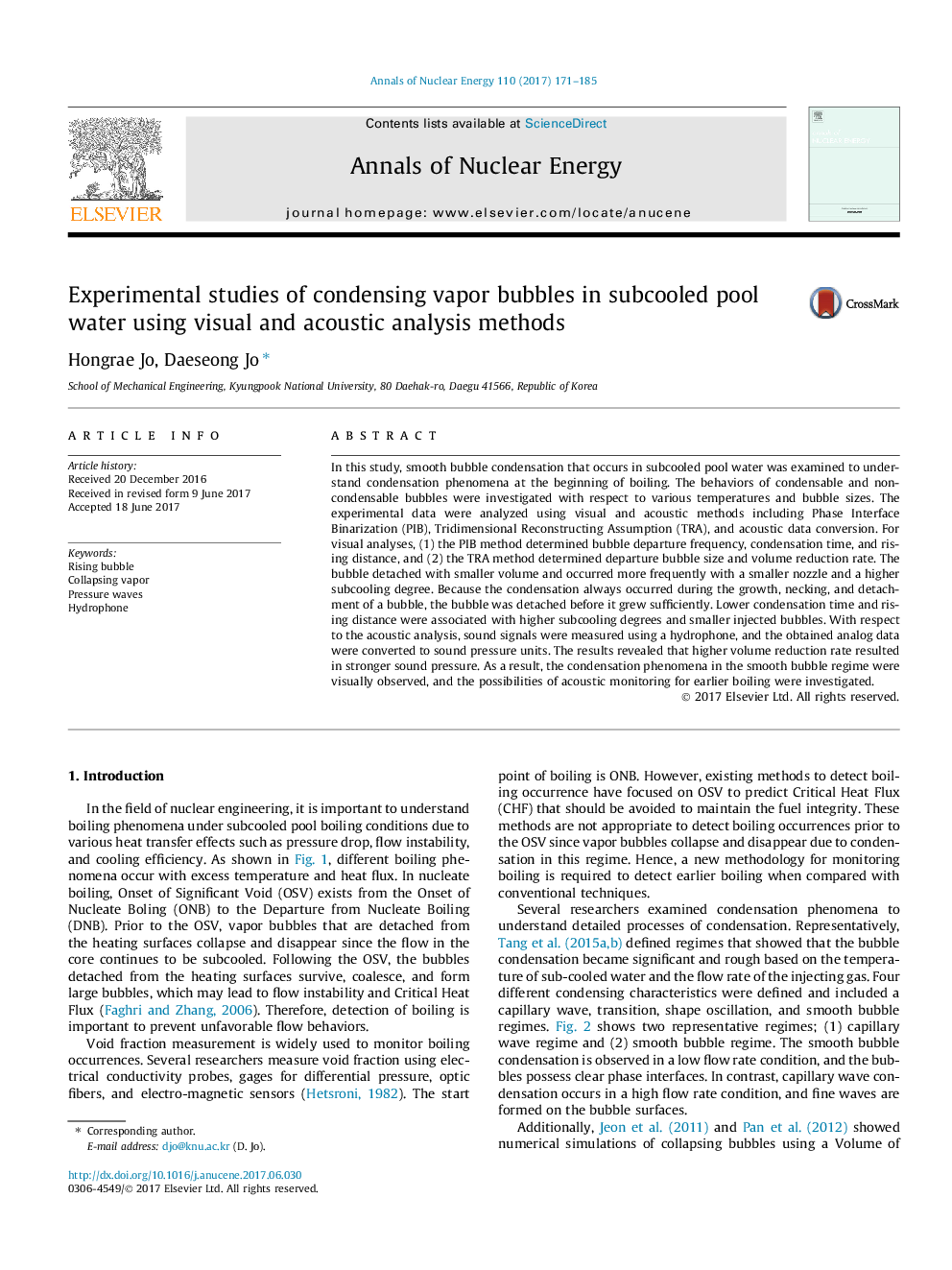| Article ID | Journal | Published Year | Pages | File Type |
|---|---|---|---|---|
| 5474924 | Annals of Nuclear Energy | 2017 | 15 Pages |
Abstract
In this study, smooth bubble condensation that occurs in subcooled pool water was examined to understand condensation phenomena at the beginning of boiling. The behaviors of condensable and non-condensable bubbles were investigated with respect to various temperatures and bubble sizes. The experimental data were analyzed using visual and acoustic methods including Phase Interface Binarization (PIB), Tridimensional Reconstructing Assumption (TRA), and acoustic data conversion. For visual analyses, (1) the PIB method determined bubble departure frequency, condensation time, and rising distance, and (2) the TRA method determined departure bubble size and volume reduction rate. The bubble detached with smaller volume and occurred more frequently with a smaller nozzle and a higher subcooling degree. Because the condensation always occurred during the growth, necking, and detachment of a bubble, the bubble was detached before it grew sufficiently. Lower condensation time and rising distance were associated with higher subcooling degrees and smaller injected bubbles. With respect to the acoustic analysis, sound signals were measured using a hydrophone, and the obtained analog data were converted to sound pressure units. The results revealed that higher volume reduction rate resulted in stronger sound pressure. As a result, the condensation phenomena in the smooth bubble regime were visually observed, and the possibilities of acoustic monitoring for earlier boiling were investigated.
Related Topics
Physical Sciences and Engineering
Energy
Energy Engineering and Power Technology
Authors
Hongrae Jo, Daeseong Jo,
